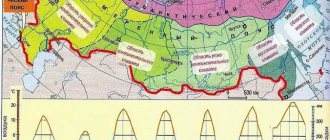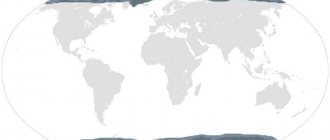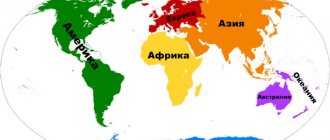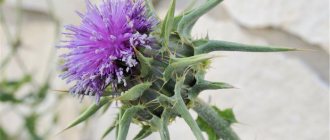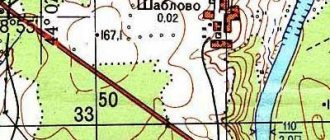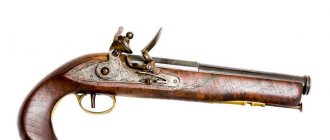Animals
The fauna in the Arctic climate zone is quite poor, since living beings have to adapt to difficult conditions. The continents and islands are inhabited by northern wolves and lemmings, Novaya Zemlya deer and arctic foxes. Greenland is home to populations of musk oxen. One of the traditional inhabitants of the Arctic climate is the polar bear. It lives both on land and swims in water areas.
The bird world is represented by polar owls, guillemots, eiders, and pink gulls. On the coast there are flocks of seals and walruses. Pollution of the atmosphere, the world's oceans, melting glaciers, and global warming contribute to the decline in animal and bird populations. Some species are protected by various states. National reserves are also created for this purpose.
Plants and animals
Despite the harsh conditions and poor habitability, the Arctic is not completely uninhabited. To understand what plants grow in the Arctic, it is enough to remember its climatic and temperature characteristics.
Mostly dwarf vegetation is found: shrubs, grasses, mosses and lichens. They look like regular ones, but smaller. There are no trees, but in the warmer part there are bushes up to 2 meters high. The moss and lichens are quite dense and thick, the grass can be waist-high. In the north, where the Arctic desert stretches, only cellular plants survive: moss, lichen, and from time to time frost-resistant herbaceous species, for example, the polar poppy, emerge.
The fauna of the Arctic is quite diverse and unique. There are predatory and herbivorous representatives of mammals: musk ox, polar bear, wolverine, ground squirrel, reindeer, bighorn sheep, ermine, wolf and arctic fox, Arctic hare and lemming. The waters are inhabited by walruses, seals and several species of whales. The Arctic is also home to many migratory birds. But there are no reptiles here.
Temperature
For the most part, winter lasts in the Arctic climate zone. The average air temperature is –30 degrees Celsius. Summer is short, lasting several days in July, and the air temperature reaches 0 degrees, can reach +5 degrees, but very soon frosts set in again. As a result, the air does not have time to warm up in a short period of summer, glaciers do not melt, and, moreover, the earth does not receive heat. That is why the continental territory is covered with snow, and glaciers float in the water areas.
Special zones of the Arctic and Antarctic belts
The harsh characteristics of this climatic zone contribute to the emergence of special zones in which weather conditions absolutely influence the course of all natural processes. Zones of this type include the following areas of the earth's surface:
- arctic desert;
- arctic tundra.
Arctic desert
The features of this type of Arctic climate region are the following important aspects:
- in most cases, they are located in the climate zone of the Northern Hemisphere;
- the air temperature, even in the warmest period of summer, does not rise above zero on the thermometer scale;
- depending on the latitude, the polar night can last from 97 to 127 days;
- the average annual temperature ranges from -20 to -300C, but sometimes the temperature drops to -600C;
- the temperature regime contributes to fairly intense frost weathering of the soil;
- trees and shrubs do not grow in the Arctic desert;
- the flora is represented by an incredible number of species of mosses and lichens, and in some places you can find herbaceous plants such as cinquefoil, saxifrage and forget-me-nots;
- Since the flora of the ice desert is represented very sparingly, there is, accordingly, a small number of representatives of the fauna, which include lemmings, arctic foxes, arctic wolves and Novaya Zemlya deer.
arctic tundra
This area of the Arctic and Antarctic climate zones is distinguished by the following features:
- the maximum temperature of the warmest period of the year is 50C;
- of the flora, the most common is moss-lichen cover, and along the watershed lines you can sometimes find thickets of tundra shrubs;
- There are few representatives of the fauna here, but in the summer quite a lot of birds appear here.
Thus, in this article we have revealed in detail all the natural features of the Arctic and Antarctic natural belts. We hope that the information presented in the article will become quite educational material for you.
See also:
- Types of impact on the atmosphere
- Igneous, metamorphic and sedimentary rocks
- human influence on the lithosphere
- Internal structure of the Earth's layers - crust, mantle, core
- The main parts of the water shell of the hydrosphere
- Greenhouse effect in the atmosphere - global warming problems
- Assessment of air pollution levels
- volumes and reserves of fresh water resources in the hydrosphere
Climatic zones of Russia
The identification of climate types is based on differences in solar radiation, atmospheric circulation, as well as features of the earth's surface. These indicators are very different from each other on the territory of Russia, and this means the formation of various types of climate.
climatic zones are distinguished in Russia : arctic, subarctic, temperate, subtropical. They are characterized by a general increase in heat from north to south.
Arctic belt. The Arctic belt includes the polar regions: the islands of the Arctic Ocean and the extreme northern coast of mainland Russia. Due to the lack of solar radiation, air temperatures remain low for most of the year. Even in summer, during the polar day, a significant part of the radiation is reflected by the snow and ice cover and is spent on melting the snow and ice. The temperature rarely rises above 0 °C and only at the southern border of the Arctic zone reaches +4 °C.
During long frosty winters, the air temperature can drop to -50 °C. During the polar night you can see an amazing phenomenon - the northern lights.
The Northern Lights occur due to solar activity, when streams of electrically charged high-energy particles enter the Earth's atmosphere. The highly rarefied gases in the upper layers of the atmosphere are excited and emit a glow. Auroras are amazingly varied in shape and color. The faint glow is usually white. As its brightness increases, yellow-golden tones appear. The brightest ones are dominated by shades of crimson. The fires of radiance are ignited by bizarre ruby mountains, with blazing multilingual purple flames. From this fire, golden, bluish and green tints fall across the entire sky.
| Rice. 113. Northern Lights |
The intensity of precipitation is low, and its annual amount decreases from west to east. Precipitation falls in the form of snow (55-60% of the annual precipitation), often accompanied by blizzards. The winds reach great strength, especially on the sea coasts. In combination with severe frosts, the wind becomes harsh and prickly. It easily blows through houses, clothes and burns the body like a flame; manages to freeze his face in a short time.
Subarctic belt. The subarctic zone includes territories located further south: beyond the Arctic Circle in the European part and Western Siberia and in significant areas of Eastern Siberia and the Far East, extending to the parallel of 60° N. w.
The climate of the western and eastern parts is distinguished by great contrast. In general, the long and severe winter is milder in the north of the Kola Peninsula (average January temperatures: -8 °C) and the Pacific coast (-12 °C ... -18 °C), more severe and icy in the basins of northeastern Siberia (up to - 48 °C). In most of the Republic of Sakha (Yakutia) and the Magadan region, the usual minimum temperature is -50 °C ... -55 °C.
It is here that the “pole of cold” of the Northern Hemisphere is located - one of the oldest settlements in Yakutia - Oymyakon, where the lowest temperatures are recorded (below -70 ° C). Oymyakon is located in a large depression, protected from the penetration of warm and humid air masses by high ridges and representing a kind of natural cold cellar.
Subarctic summers are generally warmer than Arctic ones. In the north of the subarctic zone the air warms up to +4 °C, in the south - up to +12 °C.
The severity of winters and the short duration of the warm period, when cold returns are still possible, contribute to the preservation of permafrost. Severe frosts freeze rivers with ice to the very bottom. But the river does not die. Part of the water goes under the bottom of the channel, seeping through the pebbles of the banks, making its way to the surface. Even in frosts of fifty degrees, water comes out, pouring out and forming ice .
Precipitation is unevenly distributed over the territory and seasons of the year. They fall mainly in the form of rains during the warm period.
| Rice. 114. Oymyakon - “pole of cold” |
Temperate zone. The climate of the temperate zone is common in most of Russia. There are large seasonal differences in the amount of solar radiation reaching the surface. Summer is warm, winter is cold. Cold winters are associated with insignificant solar radiation, most of which is reflected from the snow cover. Of particular importance is cyclonic activity, which enhances the exchange of air masses and plays a major role in irrigating the earth's surface with frontal precipitation.
Features of the circulation of air masses make it possible to distinguish the following types of continental climate within the temperate zone when moving from west to east: moderate continental, continental, sharply continental, and monsoon. Material from the site https://doklad-referat.ru
The monsoon climate is clearly expressed in the Far East.
In summer, under the influence of cyclonic activity, sea air is carried out from the Pacific Ocean, causing heavy rains. Significant cloudiness reduces solar radiation. Summers are cool, with July temperatures averaging +10 °C ... +20 °C. In winter, anticyclonic cold, sunny and frosty weather prevails, formed under the influence of air masses coming from the Asian High. Average January temperatures: -15 °C … -35 °C. The annual precipitation exceeds 800 mm.
Subtropical zone. The climate of the subtropical zone in Russia is expressed in a small section of the Black Sea coast from Anapa to Sochi. Warm winters with average positive temperatures (+1 °C ... +6 °C) and hot summers (average July temperatures +22 °C ... +24 °C) of the coastal area contributed to its transformation into a large resort area.
The Novorossiysk bora (north-east) is a cold, stormy, sharply gusty wind that occurs on the border of the low spurs of the Caucasus Range with the Black Sea. Cold Arctic air penetrates to the Ciscaucasia, and then flows over low ridges to the Black Sea coast. Due to the great contrasts in the pressure of land and sea, it hits the city with incredible speed (40-60 m/sec), overturning cars and railway cars, breaking power lines, and carrying ships out to sea.
On this page there is material on the following topics:
Climatic zones of Russia abstract
Report on climatic zones of Russia
Types of climate in the temperate zone of Russia, summary
Russian climate geography
Message on the topic of climate zones and climate types
Questions about this material:
On what basis are climate types distinguished?
What do the Arctic and subarctic climate zones have in common and how do they differ?
Why is the coldest place in the subarctic climate and not in the arctic climate?
Explain the features of the monsoon climate.
Location
The Arctic belt covers the Arctic Ocean, islands in its waters, small coastal areas of Canada (Melville and Boothia peninsulas) and Russia (northern Taimyr).
The largest island is Greenland, large archipelagos: Canadian, Spitsbergen, Franz Josef Land.
On the island of Champ (Franz Josef Land) there are many stone balls of unknown origin, their size ranges from 1-2 cm to 3-4 m.
Rice. 1. Champ Island Balls.
